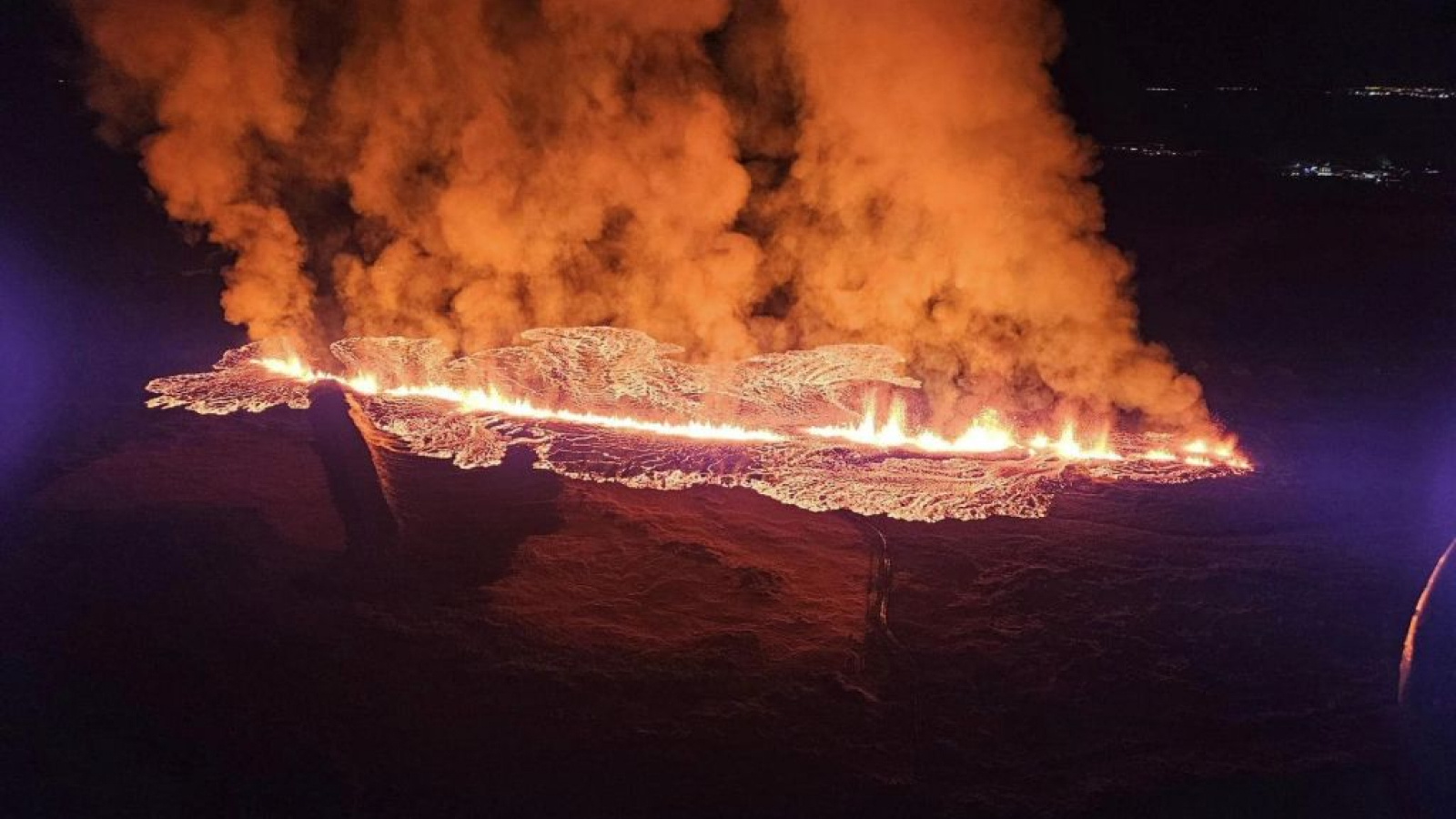[ad_1]
More volcanic eruptions could hit Iceland’s Reykjanes Peninsula in the coming days and weeks, the country’s Met Office has warned. Two new fissures appeared in the south of the country on Sunday (Jan. 14) close to the town of Grindavík, with lava destroying three houses.
“We haven’t seen events like this in the Reykjanes Peninsula for about 800 years,” David Pyle, a volcanologist at the University of Oxford, told Live Science in an email. “But we have now had five small eruptions in the space of just three years.”
The latest eruption followed an intense series of small earthquakes and ground deformation in the early hours of Sunday morning, before lava burst from the ground along a 3,000-foot-long (900 meters) fissure just before 8 a.m. local time. Another fissure measuring around 330 feet (100 m) also opened next to the first, right on the outskirts of Grindavík.
Related: Iceland volcano: Situation in Grindavík has ‘become very bleak’ following new eruption
Images and video show lava flowing from the fissures and creeping towards the town.
I am devastated by todays event. I considered not posting images that show terrible tragedy to people’s homes. I want to make it clear that if there are any news outlets out there that need free content to raise awareness, let me know, nobody should make money on this! pic.twitter.com/CaNih72v6ZJanuary 14, 2024
According to a translated statement from the Iceland Met Office (IMO) released at 3 p.m. local time on Monday, lava flow from the fissure close to Grindavík appears to have stopped, while the larger one to the north has slowed significantly. However, there still appears to be magma movement beneath Grindavík.
“It cannot be ruled out that new fissures will open without warning,” representatives wrote in the statement. “That was the case when the crack opened at the border of Grindavík yesterday. No signals were seen on the measuring instruments in connection with that eruption in particular.”
Lovísa Mjöll Guðmundsdóttir, a natural-hazard specialist at the IMO, told the Iceland Monitor that there is “no way to exclude” the possibility of more eruptions. “GPS data showed us that there is increased magma flowing into the chamber, and thus there is a possibility of more fissures opening up,” she said.
Signs of an impending volcanic eruption in Iceland began in November 2023 after a 9.3-mile (15 km) magma dike — a near-vertical underground tunnel running from a magma chamber towards Earth’s surface — formed from Sundhnúk in the northeast of the Reykjanes Peninsula to Grindavík and into the sea, which prompted Grindavík residents to evacuate. On Dec. 18, the volcano erupted, sending magma plumes up to 100 feet (30 m) into the air. Activity at the volcano quickly slowed and largely ceased within a few days.

Lava from the two new fissures also appears to have slowed significantly — but unlike the December eruption, the land still appears to be rising around Svartsengi, about 2.5 miles (4 km) to the north, Guðmundsdóttir told national broadcaster RUV — and data is now being reviewed to better understand what’s happening beneath the surface.
“Uplift of the area around Svartsengi through November, December and January all indicated that there was magma flowing into a storage region within the crust, and this was pushing up the ground as a result,” Pyle said. “The eruptions in December and this week were both from a dyke/fissure system that is thought to be supplied with magma from this storage region. It is likely that as long as new magma continues to arrive [in] Svartsengi, then there could continue to be eruptions from the current fissure system.”
The eruptions on the Reykjanes Peninsula are part of a 1,000-year volcanic cycle that could last for centuries. In 2021, the Fagradalsfjall, another volcano on the peninsula, erupted after around 800 years of inactivity. Geological records suggest the region experiences periods of quiet that last between 600 and 1,000 years, followed by pulses of volcanic eruptions that last for 200 to 500 years.
“This is starting to look like a return to an episode of eruption and rifting, like the ‘Fires’ of 800 to 1,000 years ago, with a pattern of repeated, small fissure eruptions that may be spaced closely in time, and may continue for some years,” Pyle said.
[ad_2]
Source link


